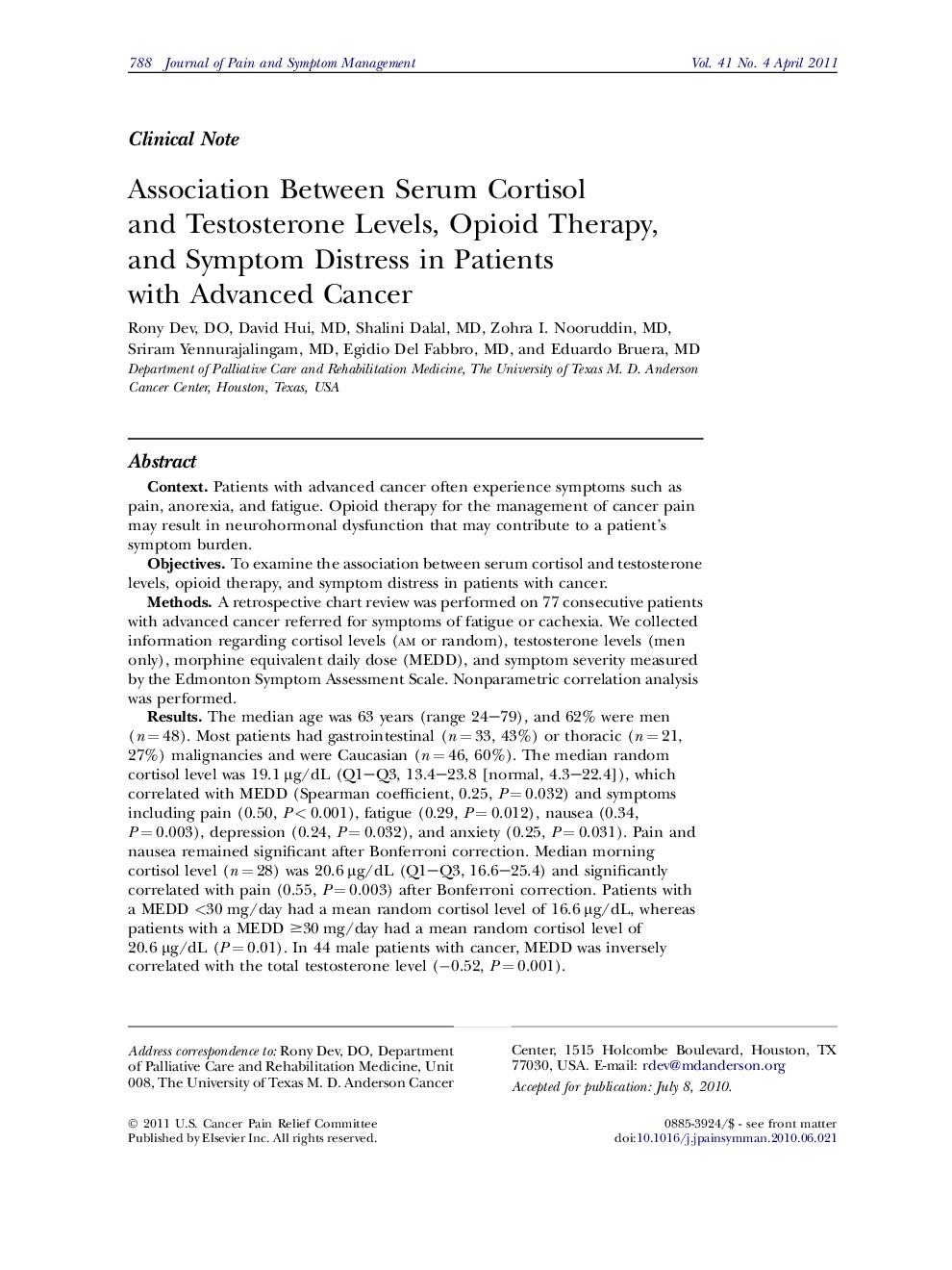| کد مقاله | کد نشریه | سال انتشار | مقاله انگلیسی | نسخه تمام متن |
|---|---|---|---|---|
| 2734780 | 1147677 | 2011 | 8 صفحه PDF | دانلود رایگان |

ContextPatients with advanced cancer often experience symptoms such as pain, anorexia, and fatigue. Opioid therapy for the management of cancer pain may result in neurohormonal dysfunction that may contribute to a patient’s symptom burden.ObjectivesTo examine the association between serum cortisol and testosterone levels, opioid therapy, and symptom distress in patients with cancer.MethodsA retrospective chart review was performed on 77 consecutive patients with advanced cancer referred for symptoms of fatigue or cachexia. We collected information regarding cortisol levels (am or random), testosterone levels (men only), morphine equivalent daily dose (MEDD), and symptom severity measured by the Edmonton Symptom Assessment Scale. Nonparametric correlation analysis was performed.ResultsThe median age was 63 years (range 24–79), and 62% were men (n = 48). Most patients had gastrointestinal (n = 33, 43%) or thoracic (n = 21, 27%) malignancies and were Caucasian (n = 46, 60%). The median random cortisol level was 19.1 μg/dL (Q1–Q3, 13.4–23.8 [normal, 4.3–22.4]), which correlated with MEDD (Spearman coefficient, 0.25, P = 0.032) and symptoms including pain (0.50, P < 0.001), fatigue (0.29, P = 0.012), nausea (0.34, P = 0.003), depression (0.24, P = 0.032), and anxiety (0.25, P = 0.031). Pain and nausea remained significant after Bonferroni correction. Median morning cortisol level (n = 28) was 20.6 μg/dL (Q1–Q3, 16.6–25.4) and significantly correlated with pain (0.55, P = 0.003) after Bonferroni correction. Patients with a MEDD <30 mg/day had a mean random cortisol level of 16.6 μg/dL, whereas patients with a MEDD ≥30 mg/day had a mean random cortisol level of 20.6 μg/dL (P = 0.01). In 44 male patients with cancer, MEDD was inversely correlated with the total testosterone level (−0.52, P = 0.001).ConclusionIn patients with advanced cancer, elevated random cortisol levels were associated with pain and opioid use, although abnormally low levels of cortisol were found to be infrequent. Patients on higher opioid therapy (MEDD >30) had increased cortisol levels, and male patients had lower testosterone levels. Our study suggests that opioid therapy in patients with advanced cancer may inhibit gonadal function while sparing the adrenal axis. Future studies are needed.
Journal: Journal of Pain and Symptom Management - Volume 41, Issue 4, April 2011, Pages 788–795